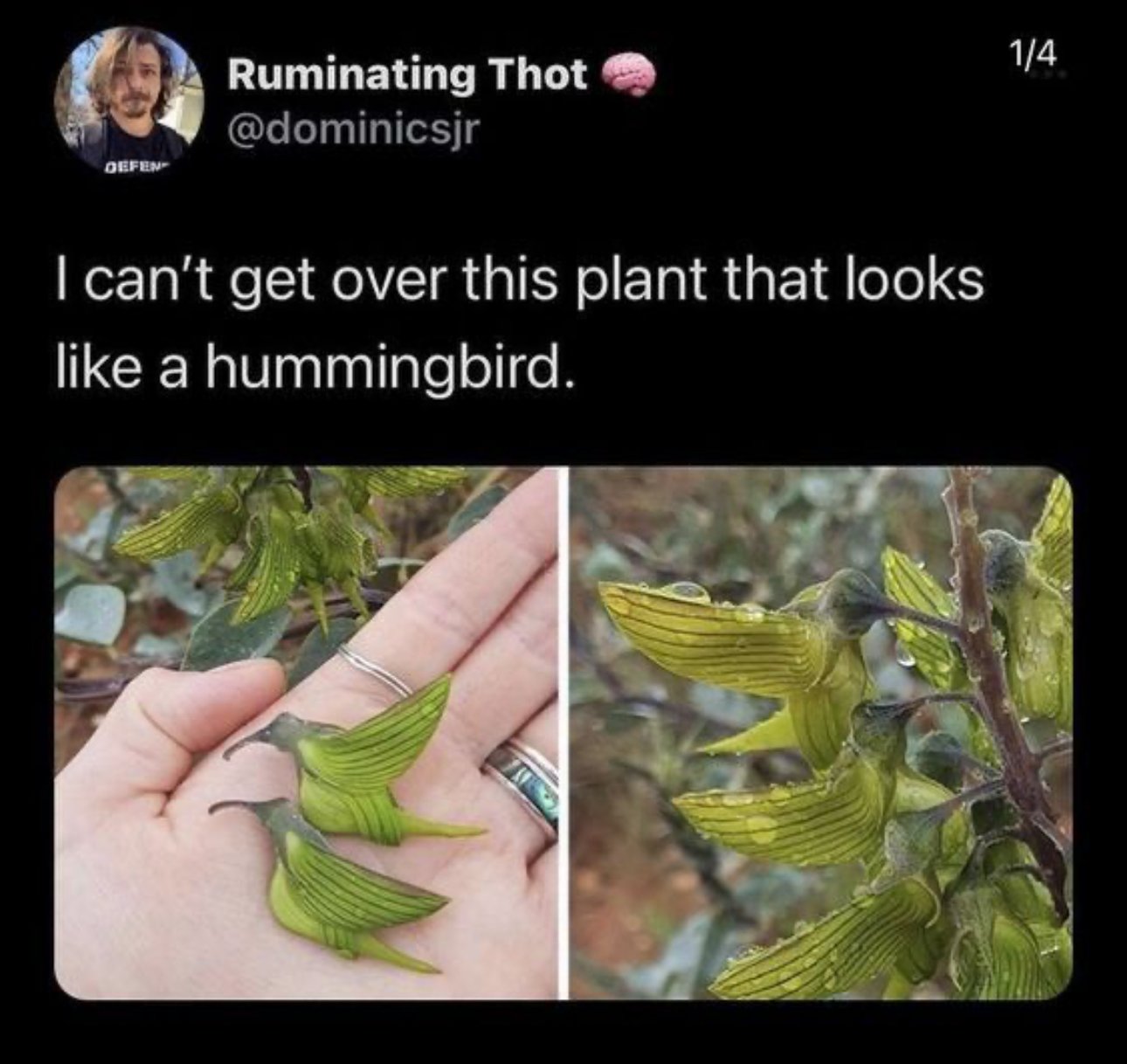this post was submitted on 07 Feb 2024
884 points (98.9% liked)
Mildly Interesting
17403 readers
522 users here now
This is for strictly mildly interesting material. If it's too interesting, it doesn't belong. If it's not interesting, it doesn't belong.
This is obviously an objective criteria, so the mods are always right. Or maybe mildly right? Ahh.. what do we know?
Just post some stuff and don't spam.
founded 1 year ago
MODERATORS
you are viewing a single comment's thread
view the rest of the comments
view the rest of the comments

Seeing the up votes and down votes in this thread, I realize this is an unpopular "opinion" but the flowers didn't necessarily evolve to look like hummingbirds specifically. That many people see it as looking hummingbird-like is more a reflection of the human mind's ability to find patterns and connections even when they don't exist. It's interesting and pretty for sure, and definitely a curiosity.
Same thing for the "monkey orchid". You see a monkey because the flowers are photographed at an unnatural angle and forced perspective, the photos online where the effect is most visible are the ones with lots of compression artifacts and generally poor quality, and because of the power of suggestion. If you saw these in person (without prior context of the photos), there's a good chance you wouldn't even notice the face-like visage unless pointed out.
On the other hand, the "bee orchids" actually are an example where it seems that the flowers have evolved in a way that specifically mimics the appearance of bees (and wasps). These flowers mostly attract male bees and wasps who confuse them for lovely lady bees and wasps and try to mate with the flowers. In the process, they pick up a pollen sac / pollinia, and if all goes well they end up pollinating the flower (or move on to pollinate another one).
There are examples of biological mimicry that result from natural selection pressures, leading to the evolution of such an organism.
Heres one thought experiment on why this plant’s evolution to mimic a hummingbird is not that unlikely (keeping in mind that mutations are random, and whatever ends up succeeding due to natural selection pressures doesn’t necessarily imply a deterministic process):
-hummingbirds select to drink from plants that other hummingbirds visit, leading to
-plant reproducing more because hummingbirds drinking from one flower to another helps with pollination, leading to
-plant evolving to look like other hummingbirds drinking from it so real hummingbirds drink from it
We can’t know for sure without doing research of course, but we have enough understanding of natural selection and evolutionary processes to reason about such mechanisms for existing organisms :)
Edit: doesn’t matter if plant native to Australia.You know continents were joined at one point, and evolution takes hundreds or millions of years at times. Also, I don’t mind being mistaken for chat gpt, I am shit posting anyway lol.
Chat GPT ass text
What's your excuse
Oh shit, obligatory chat GPT ass-text